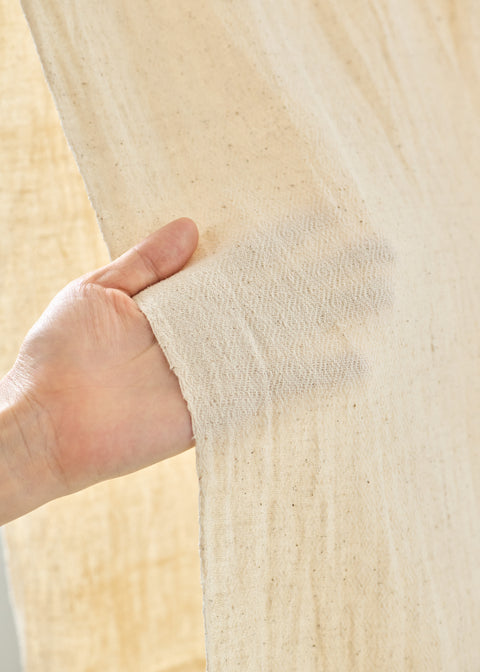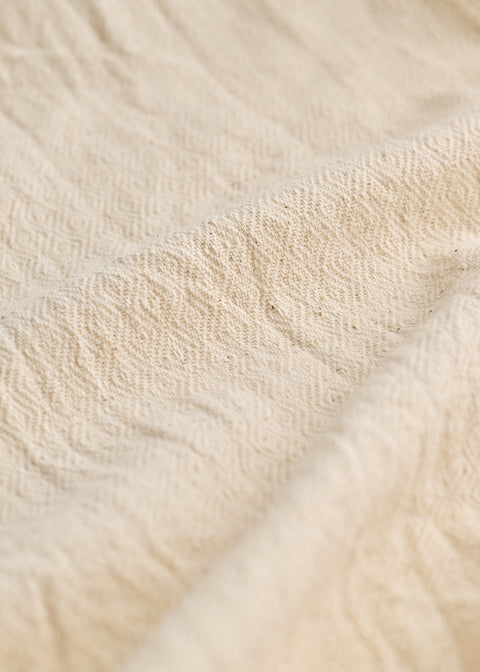

Hand-woven Kala Cotton Diamond Pattern
*The displayed price is per 10cm, and you can purchase in 10cm increments. For example, if you want to purchase 80cm, please select "8" for the quantity.
Product Description
Kala Cotton is a native cotton variety that is said to have been cultivated in the eastern region of Kutch, Gujarat, since ancient times.
We wove the hand-spun kala cotton into a diamond pattern.
As the name "Kala" suggests, meaning "black" in local languages and Hindi, this is a variety of cotton that has not been genetically modified or bleached, and has a strong, natural color compared to modified varieties.
(It is also said to refer to a state where black particles of cotton seeds or dregs are mixed in.)
Kala cotton can be grown with rainwater alone, is highly resistant to disease and pests, and can be cultivated by farmers with minimal investment.
It also has the effect of giving elasticity to and revitalizing land that has become barren.
Size
Fabric width: Approx. 100 - 110 cm
* Size and color may differ from the actual product.
Materials
Native organic cotton
Region of production
Kutch, Gujarat State
System of design
In collaboration with CALICO
Khamir
Spinning
Hand spinning with ambar charka
Weaving
Jacquard weaving by hand
Dyed
Undyed-Natural
Before you purchase
* This product is also carried in the stores, so it may occasionally be sold out at the time of your order through the website. Unfortunately if that the product is out of stock after you placing the order, we will contact you. We appreciate your understanding.
* In case of ordering fabrics with multiple quantities, we will send you the goods in the same or simillar shades as much as possible, but in case we can not fullfil your request, we will accept returns at your expense. Please consult with us. (Please note that we do not accept returns after cutting or processing.)
* Hand-spun yarn is mainly made by women in the village using an efficient modern spinning wheel called an “Amber Charka.” When the yarn breaks, it is spun by hand, resulting in neps, which is a characteristic feature.
* Most of hand-spun and handwoven fabrics are produced in village huts, and as a result, threads or grass may occasionally be mixed in. Additionally, there may be uneven areas, wrinkles, or slight discoloration caused by thread breaks, as well as unavoidable minor stains. Please understand that these are characteristic features of those fabrics.
* Depending on the material, friction during use may cause pilling or fuzziness. Excessive friction or pressure can cause a fabric damage, so please avoid such a situation.

